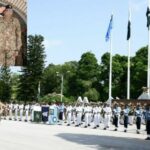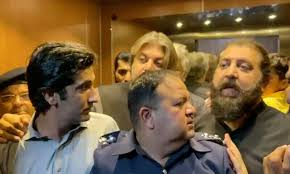June 20, 2025 – Global Desk: The relationship between the United States and Iran has been one of the most volatile in modern geopolitical history. From the 1979 Iranian Revolution to the ongoing regional power struggle in the Middle East, the two nations have remained on opposing ends of diplomacy and conflict.
1. The 1953 Coup: A US-Backed Turning Point
Tensions can be traced back to 1953, when the CIA and British intelligence orchestrated a coup against Iran’s elected Prime Minister Mohammad Mossadegh, reinstalling Shah Mohammad Reza Pahlavi. This sowed deep resentment in Iran, laying the foundation for anti-Western sentiment.
2. The 1979 Islamic Revolution and Hostage Crisis
The Islamic Revolution overthrew the pro-Western Shah and brought Ayatollah Khomeini to power. Shortly after, Iranian students stormed the US embassy in Tehran, taking 52 American diplomats hostage for 444 days. This marked the formal breakdown of US-Iran ties, which remain severed to this day.
3. Sanctions, Nuclear Disputes, and Regional Conflicts
Over the years, the US has imposed crippling sanctions on Iran over its nuclear program, accusing it of developing weapons under the guise of civilian energy. Iran maintains its program is peaceful.
The tensions further escalated with:
- US withdrawal from the 2015 Joint Comprehensive Plan of Action (JCPOA) under President Donald Trump
- Assassination of Iranian General Qassem Soleimani in a US drone strike in 2020
- Iran’s alleged support for regional militias in Iraq, Syria, Lebanon, and Yemen
4. Proxy Battles and the Struggle for Influence
From Lebanon’s Hezbollah to Yemen’s Houthis, the US and Iran have fought through proxy forces, often avoiding direct conflict but engaging in cyber warfare, assassinations, and sabotage operations.
The US continues to maintain a military presence in the Persian Gulf and backs Israel and Gulf Arab states, while Iran positions itself as the leader of a resistance axis across the region.
5. Diplomacy Amid Tensions
Despite the hostilities, diplomatic windows have periodically opened. The 2015 Iran nuclear deal (JCPOA) was hailed as a breakthrough, offering Iran sanctions relief in exchange for curbs on its nuclear program. However, its collapse in 2018 reignited tensions.
Efforts by the EU, China, and Russia to revive negotiations have continued, but progress remains limited amid rising mistrust.
Looking Ahead
While the Biden administration initially signaled interest in returning to the nuclear deal, domestic politics in both nations, regional instability, and the rise of hardline leadership in Iran have made a comprehensive agreement increasingly difficult.
As the Middle East remains a critical zone of international interest, the US-Iran standoff continues to shape alliances, energy markets, and global security.

#USIranTensions #MiddleEastPolitics #IranNuclearDeal #Geopolitics #JCPOA #USForeignPolicy #IranHistory
















